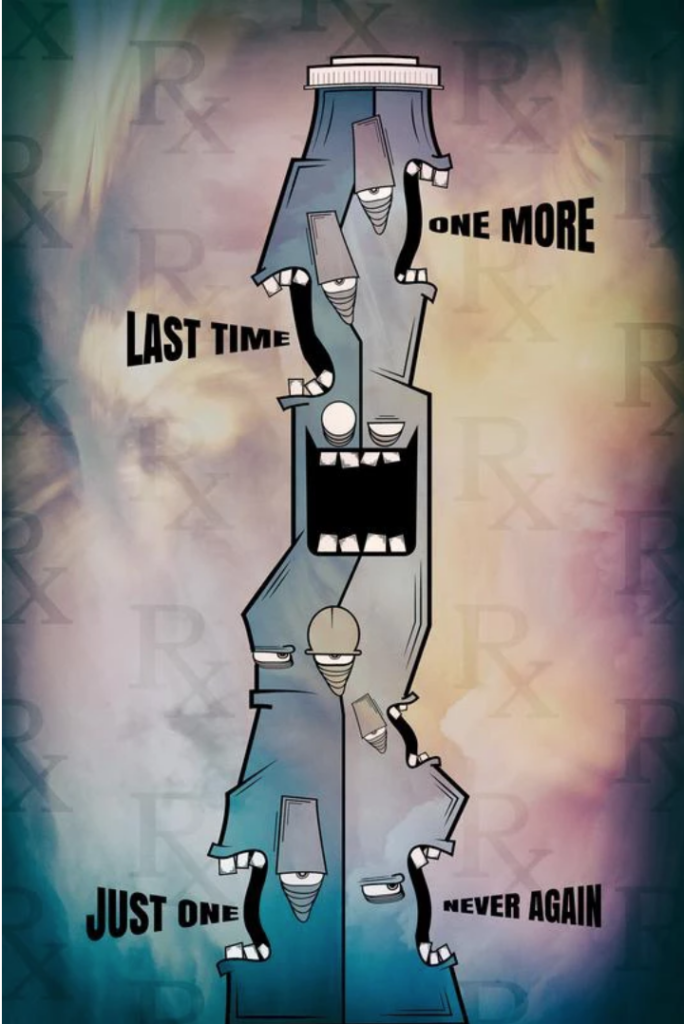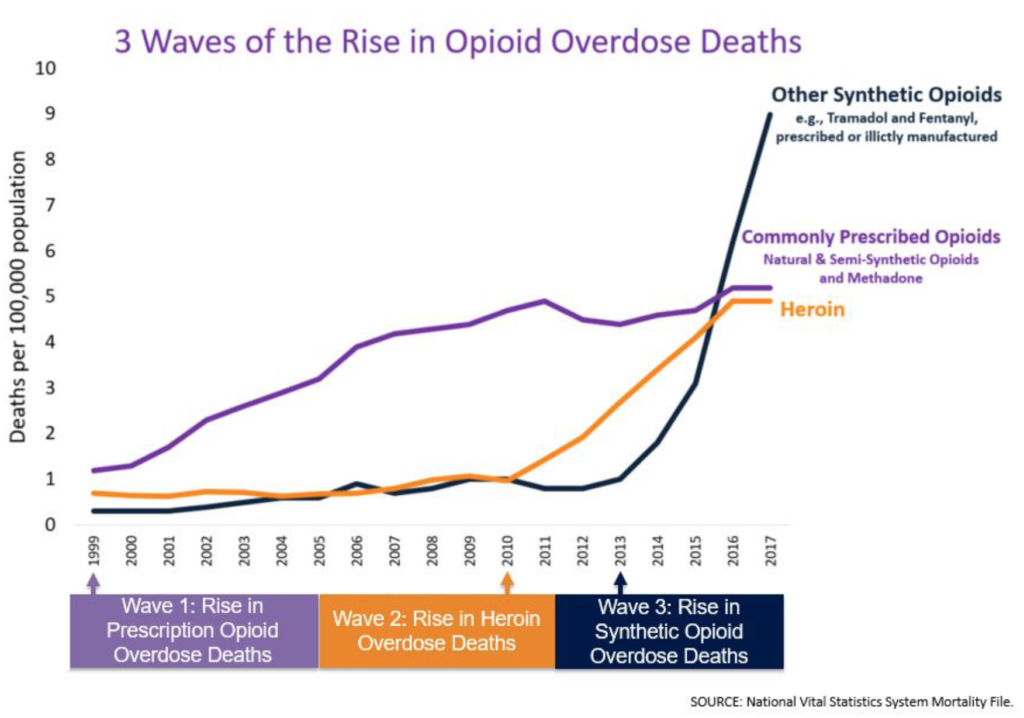
The numbers …
This statistic is staggering.
In fact, opioid overdoses killed more people in 2016 than guns or car accidents, and are doing so at a pace faster than the HIV epidemic at its peak.
These days, it is more and more likely that each of us knows someone who is struggling with or has struggled with opioid addiction. Opioids are dangerous medications, and for those with a predisposition to addiction, they can be deadly. And, as many of us know, deaths due to prescription medication overdoses have leveled off while those from heroin and other synthetic opioids have dramatically increased. Consider this graphic:

How did we get here?
Addiction to opioids goes back centuries, but the current crisis really started in the 1980s, when a handful of highly influential journal articles relaxed long-standing fears among health care providers about prescribing opioids for chronic pain.
However, the medical community became aware of the increase in opioid addiction and overdose deaths that resulted from this wave of overprescribing, and the “pain as a 5th vital sign” campaign was nixed. As health care providers tightened restrictions on opioid prescribing, those who previously used pharmaceutical opioids could no longer get them from their medical providers — leading them to seek out opioids illegally in order to prevent themselves from suffering from the symptoms of withdrawal.

What do we do now?
So, now that we are here, what do we do? Of course, access to treatment for opioid addiction and increasing the public awareness of overdose reversal drugs (like Narcan) are critical to fighting this epidemic.
- Stimulating the production of the body’s own endogenous opioids and neurotransmitters/endorphins
- Stimulating the production of the body’s natural anti-inflammatory compounds
Professional societies, insurance companies, and others are taking note of acupuncture’s effectiveness for pain management.
As of 2019, Blue Cross of Tennessee, the area’s largest health insurance provider, is no longer covering Oxycontin for pain management, adding acupuncture to the list of modalities that providers should consider.

The American College of Physicians has also updated their guidelines for the treatment of acute and chronic pain, stating:
We are truly at a crossroads and I am excited that the “western” medical community is taking note of the benefit that traditional “eastern” treatments such as acupuncture can truly have for those suffering from pain.
If you have questions about acupuncture and pain management, reach out to me via my website or speak with your primary care physician. And please, spread the word!
Western Medicine meets Eastern Medicine – Mindful Medicine Rochester!